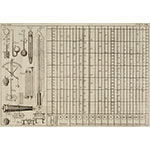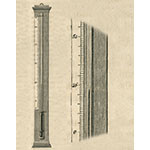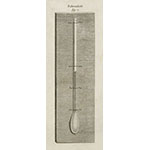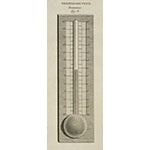Over the centuries, countless thermometric scales have been devised for the quantitative measurement of temperatures ranging between fixed extremes—typically, the freezing and boiling points of water. Many of these scales have long since been abandoned. The most widespread are described below.
Named after the Swedish scientist Anders Celsius (1701-1744), the scale has become the international standard. The scale is "centesimal," i.e. divided into 100 equal parts, each called a degree centigrade or degree Celsius (symbol: ºC). The 0 value is conventionally assigned to the temperature of melting ice and the 100 value to the temperature of boiling water, both at sea-level atmospheric pressure.
Named after the scientist Daniel Gabriel Fahrenheit (1686-1736). Now used mainly in the United States and (but no longer officially) the United Kingdom. The scale is divided into 180 equal parts, each called a degree Fahrenheit (symbol: ºF). The value 32 is assigned to the temperature of ice and the value 212 to the temperature of boiling water, both at sea-level atmospheric pressure.
Named after the French scientist René-Antoine Ferchault de Réaumur (1683-1757). The scale is divided into 80 equal parts, each called a degree Réaumur (symbol: ºR). The value 0 is assigned to the temperature of melting ice and the value 80 to the temperature of boiling water, both at sea-level atmospheric pressure.











